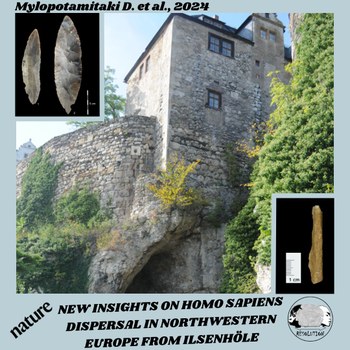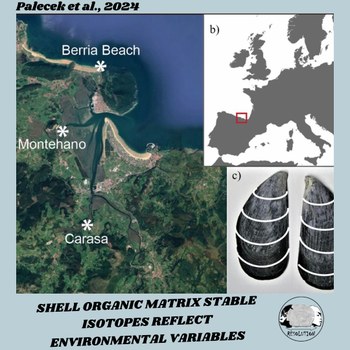
A multidisciplinary research, involving Max Planck Institute for Evolutionary Anthropology and BRAVHO Lab, revealed new insights on Homo Sapiens dispersal in Northwestern Europe, thanks to the incredible site of Ilsenhöhle in Ranis, Germany. Click here to read the whole article or scroll below to find the abstract ⤵️
Abstract
The Middle to Upper Palaeolithic transition in Europe is associated with the regional disappearance of Neanderthals and the spread of Homo sapiens. Late Neanderthals persisted in western Europe several millennia after the occurrence of H. sapiens in eastern Europe1. Local hybridization between the two groups occurred2, but not on all occasions3. Archaeological evidence also indicates the presence of several technocomplexes during this transition, complicating our understanding and the association of behavioural adaptations with specific hominin groups4. One such technocomplex for which the makers are unknown is the Lincombian–Ranisian–Jerzmanowician (LRJ), which has been described in northwestern and central Europe5,6,7,8. Here we present the morphological and proteomic taxonomic identification, mitochondrial DNA analysis and direct radiocarbon dating of human remains directly associated with an LRJ assemblage at the site Ilsenhöhle in Ranis (Germany). These human remains are among the earliest directly dated Upper Palaeolithic H. sapiens remains in Eurasia. We show that early H. sapiens associated with the LRJ were present in central and northwestern Europe long before the extinction of late Neanderthals in southwestern Europe. Our results strengthen the notion of a patchwork of distinct human populations and technocomplexes present in Europe during this transitional period.

Click the title to know more about the innovative research of our PhD candidate Dragana Paleček on stable isotopes applied to modern shells organic matrix and its crucial implications in reconstructing paleoclimate and paleoenvironmental changes.
You can also read the abstract below ⤵️
Abstract
Stable isotope ratios of mollusc shell carbonates have long been used to reconstruct past environmental conditions. Although shells also contain organics, they are seldom used in (paleo)climatic studies. Here, we extract the acid-soluble and insoluble fractions of the organic matrix of modern Mytilus galloprovincialis shells from three sites along a coast–to-upper-estuary environmental gradient to measure their hydrogen (δ2H) and oxygen (δ18O) isotope compositions. Both organic fractions showed isotopic signatures significantly different from those of carbonate and water at each site, indicating the involvement of different fractionation mechanisms. The soluble fraction showed gradual differences in isotope values along the gradient, while the insoluble fraction showed δ2H-δ18O correlation regressions subparallel to the Global and Local Meteoric Water Lines. These results showed the great potential of the shell organic matrix stable isotopes as possible (paleo)environmental proxies, stimulating further research to better define the fractionation mechanisms involved.